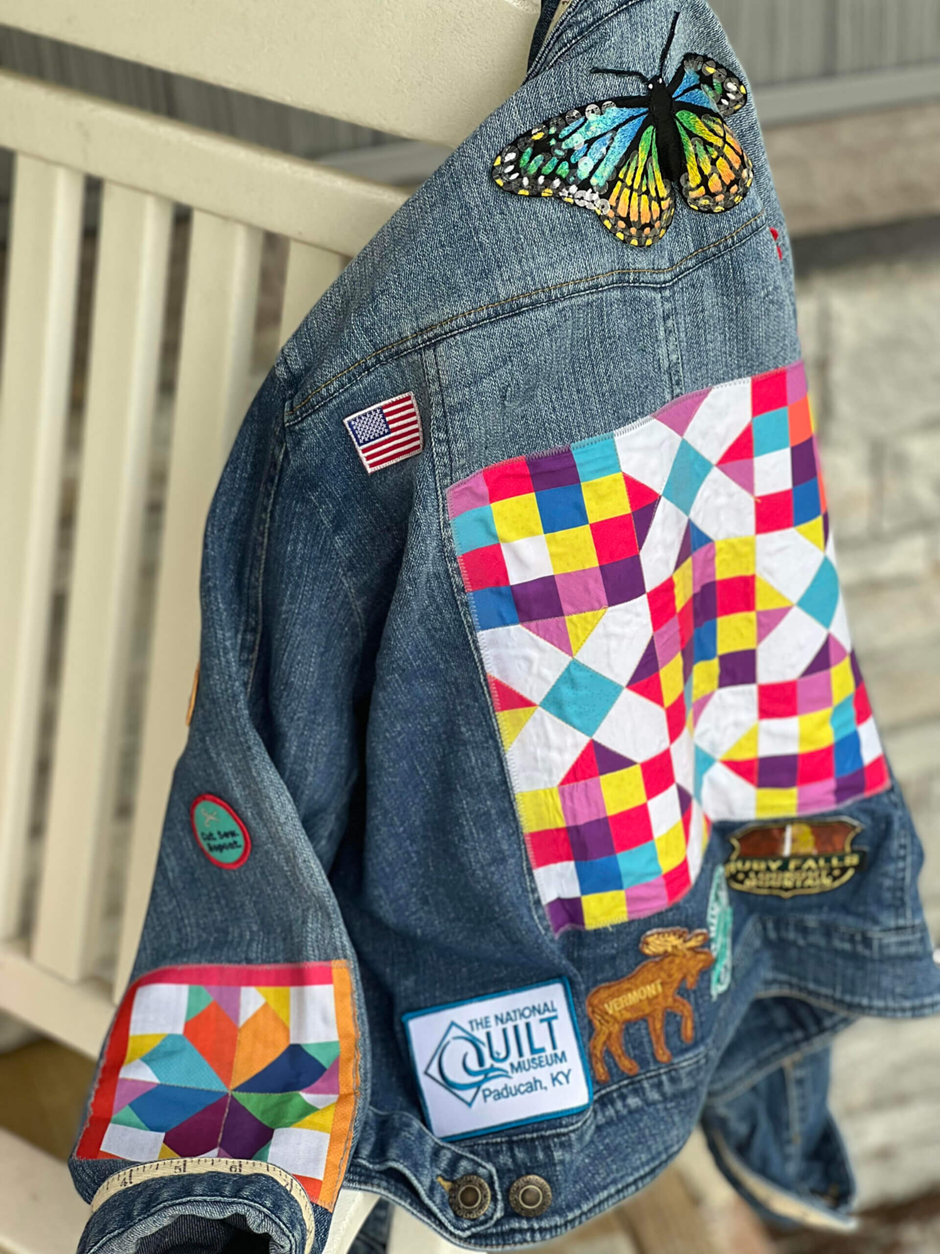Turn old garments into pieces worth reaching for again. This guide covers everything you need to know including quick fixes, visible mending, patchwork ideas, simple dye and paint, as well as clean fit tweaks that will help you rejuvenate your clothes. We will share a list of tools that are needed, tips for sourcing the best fabric, and how to mix-and-match planning.
Upcycled Clothing Ideas for Fresh Fashion
Old pieces still have a lot to offer, and upcycled clothing ideas transform that potential into looks that feel as personal as they can be everyday. Creating outfits from existing wardrobe pieces supports sustainable wardrobe basics, which includes keeping materials in use for as long as possible.
This creative refashioning overview highlights easy fix-ups such as cropping tees, patching elbows, and dye refreshes. Small wins help to build a beginner’s sewing confidence, such as hemming jeans or swapping buttons. Make a tote out of a tee, add some contrast cuffs, or stitch a visible mend that becomes the detail everyone sees.
Why Upcycling Rocks: Environmental Perks & Unique Style
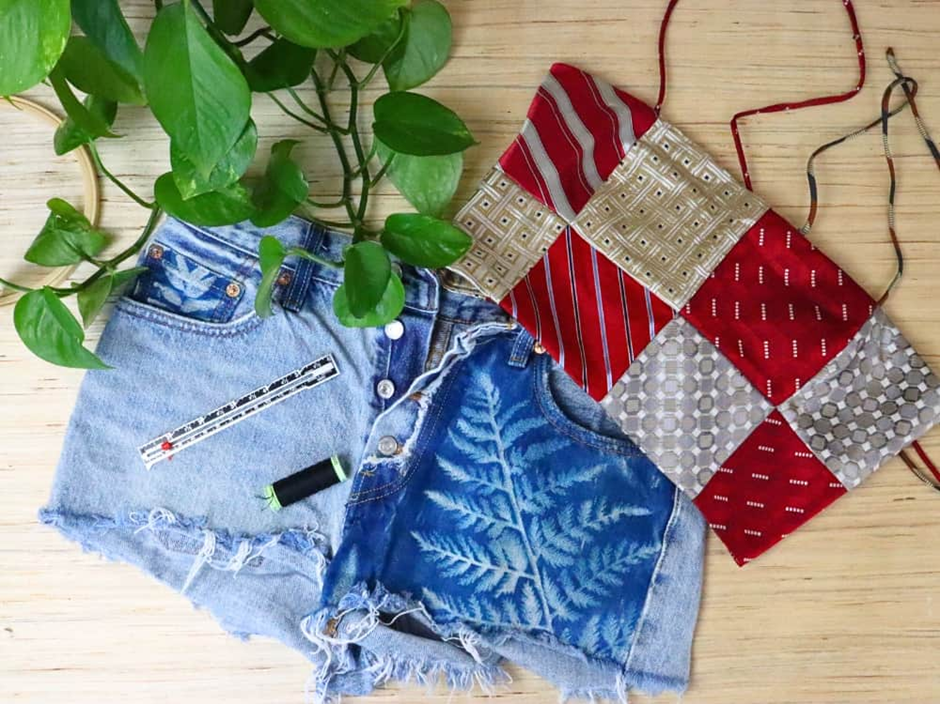
A pile of “almost good” clothes can become the most worn pieces after a few thoughtful tweaks. Upcycling helps to reduce textile waste by keeping fabric in use for a longer amount of time. That switch comes with some eco-friendly fashion benefits, such as reducing the demand for new raw materials and the pollution associated with production.
It aligns with a slow fashion mindset, allowing you to embrace care, repair, and much more deliberate wardrobe choices. Plus, it also leans into budget chic styling, since repurposing what is available is a great way to keep more money in your pocket while still making a style statement.
First Steps: Essential Tools, Skills & Setup
A clean setup helps to keep projects safe and calm. Some of the most important sewing kit essentials you need include needles, pins, matching thread, a seam ripper, measuring tape, and a marking chalk that you can easily wipe off when necessary.
Use fabric scissors and rotary cutter on a cutting mat, roll the blade away from the body, and keep your fingers behind the ruler. Learn a few basic hand stitches such as running, backstitch, and whip or ladder, which are useful when making repairs and clean closures. Create a home craft workspace that has bright task lighting and a cutting surface that is waist-high to decrease strain.
Source Smarter: Where to Find Quality Fabric & Garments
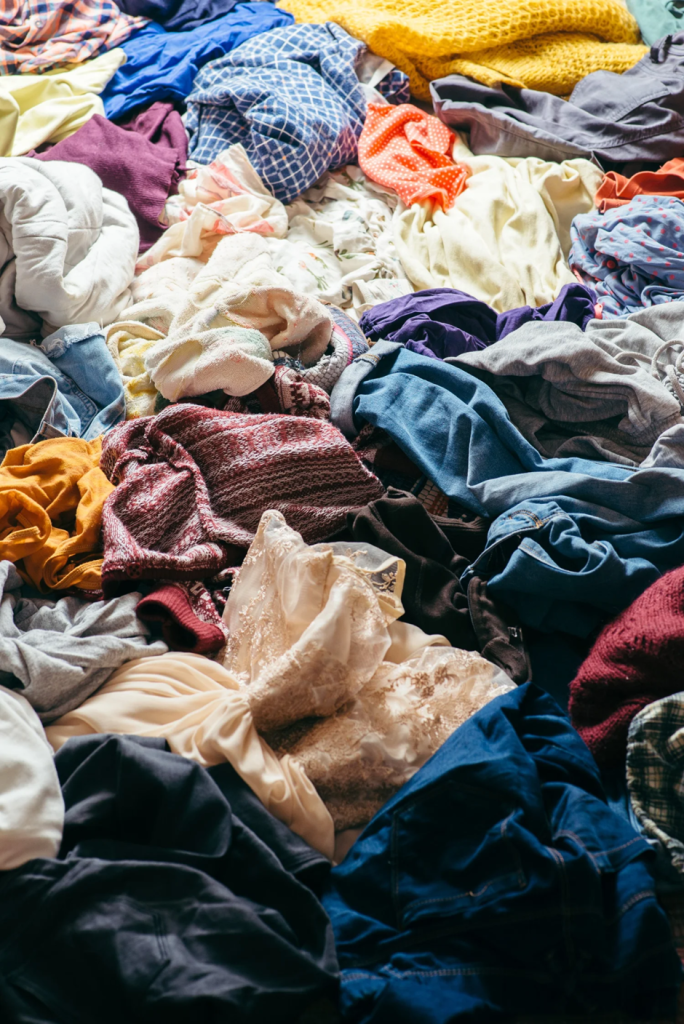
Quality leads to cleaner upcycles. Begin by taking a closer look at the seams, hems, lining, and also reading the care label. Take advantage of thrift flip sourcing to aim for stable weaves that cut and resew without warping.
Take your time to do a calm closet edit and look out for materials that still feel very durable. Follow this up with a relentless hunt for fabric remnants in bins and reuse warehouses, and choose fabrics that are tightly woven and are also less likely to fray.
Quick Wins: Easy Beginner Refashions
Fast finishes help to build momentum and decrease scrap waste. Go for no-pattern projects that rely on simple cuts and quick pressing. Make use of simple hem & crop hacks that help to shorten the length with control, and also apply a light tug to settle the edge.
A breezy T-shirt makeover involves cutting down on the sleeves, cropping the hem, and then checking if everything is balanced using a mirror. Keep the patch pockets in place using iron-on adhesives first, before stitching to enhance the durability.
Level Up: Visible Mending & Patchwork Techniques
Small flaws can become style when you choose the right stitch. Make use of visible mending with sashiko to reinforce thin denim with neat running stitches that are reminiscent of classic Japanese repair.
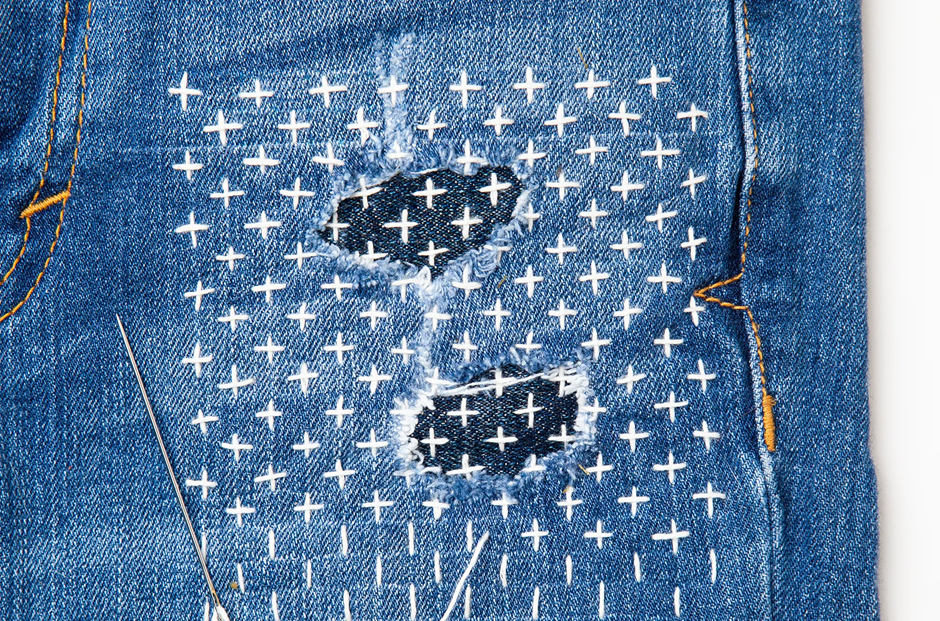
For sweaters, darning knitwear helps to rebuild the fabric by weaving a new yarn over the gap, which helps stop runs from spreading.
You can experiment with patchwork jean ideas such as contrast rectangles, raw edges, or topstitched scraps that help to add texture. Transform high-wear areas into knee/elbow repair art by adding color that ties the entire outfit together.
Revive Vintage: Modern Cuts, Mix-Fabric Panels & Trims
Closet sessions go smoother when the fit dictates the plan. Go for vintage restyling that respects the fabric while updating the cut. You can make shape tailoring tweaks such as redistributing dart intake or tightening the waist, to ensure that the garment sits flatter and moves smoothly.
To balance color and contrast, insert contrast fabric panels at the hem or side seam. Cap it off with a statement trims redo along the edges for definition that ties the whole piece together.
Seasonal & Occasion Projects
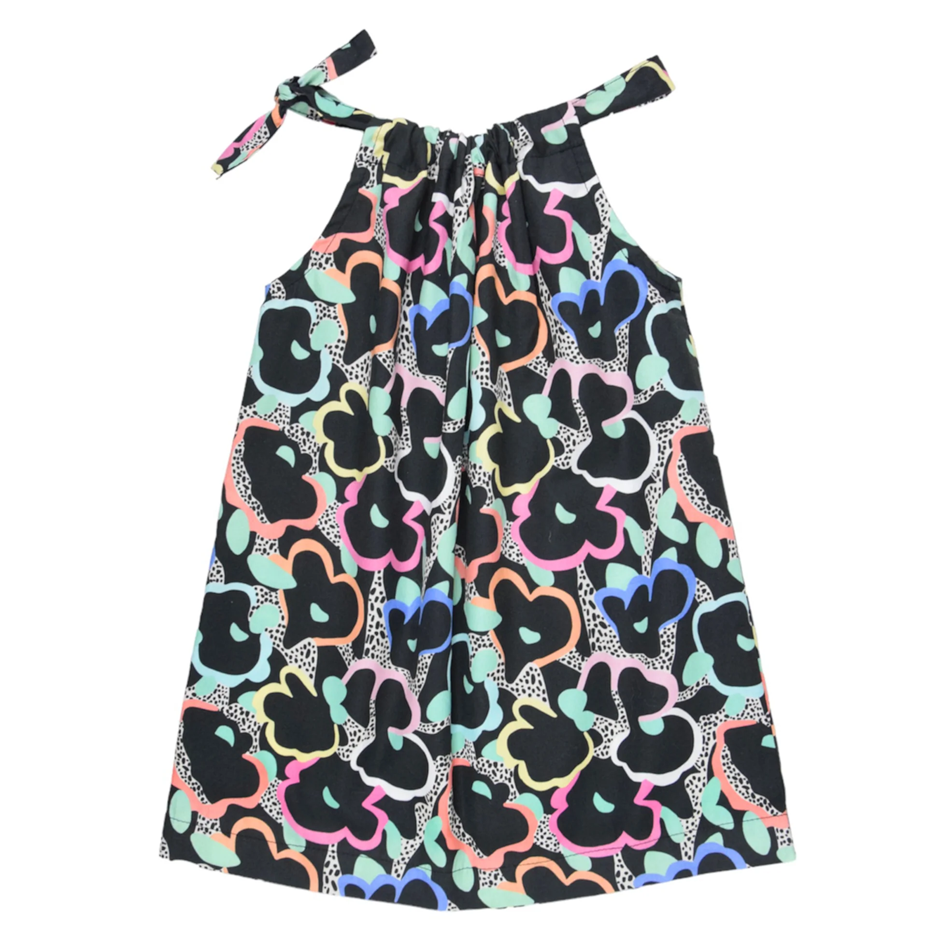
Hot days call for warm-weather refashions that use cotton or linen to keep air moving and skin cool. Once evenings start becoming crisp, try and achieve autumn layering with the use of flannel overshirts, denim vests, and wool-blend cardigans.
Work on a quick party outfit remake by adding lace panels, changing the buttons, or sewing beaded trims on to a thrifted slip. It is important that you pay extra attention to choosing the fabric weight, so that you can better match breathability for summer and cozy structure for fall.
Dye, Paint & Print: Surface Design for Wow Factor
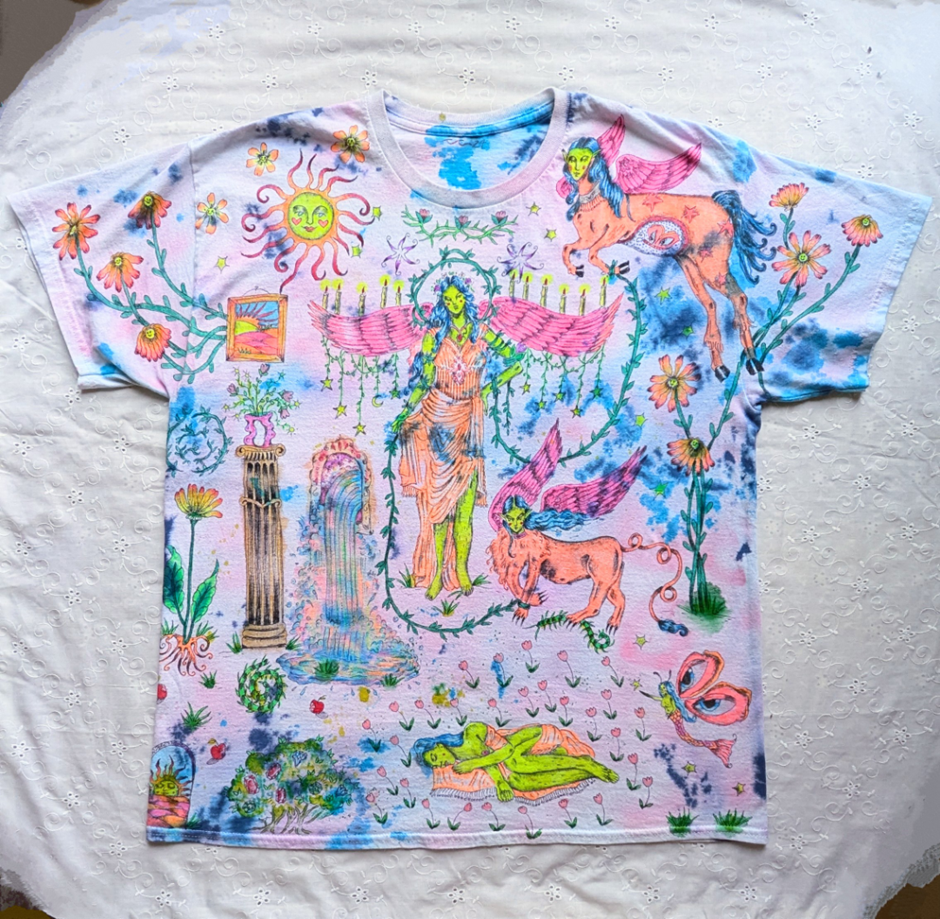
Old garments take color very well, provided they are met with the right prep and patience. Go with natural dyeing at home using food scraps, and boost color hold on cotton with a tannin or soy bath followed by use of alum. Add quick fabric paint accents on pockets or hems and heat set from the back.
Borders can be printed with hand-cut block print stamps, pressing on a padded surface for crisp results. Take advantage of colorfast setting tips that include curing time and gentle cold washes that help to minimize bleed.
Mix & Match: Build a Sustainable Capsule from Upcycles
Capsule wardrobe planning is a great way to choose a streamlined collection of refashioned staples with comparable lines that work well together. Make use of a cohesive color palette so that the tops, bottoms, and the outer layers repeat colors that help to link every look.
Use texture layering tricks to create depth, such as a denim with rib knit or crisp poplin with soft fleece. Test out outfit versatility by mixing and matching each piece with two others that work for day, night, and everything in between.
Conclusion: Upcycled Clothing Ideas for Fresh Fashion Make It Yours
Sourcing, sorting, and surface design work best as small steps that build on each other. Choose one fabric, draft a tweak you’ll like to make, and then apply paint or patches to transform your upcycled clothing ideas into useful pieces.
Each experiment you embark on gives you a DIY confidence boost to make even bolder edits. Allow your choices to reflect creative wardrobe goals that match your daily wear.
Refashion one tee tonight and share a before and after in the comments below!

